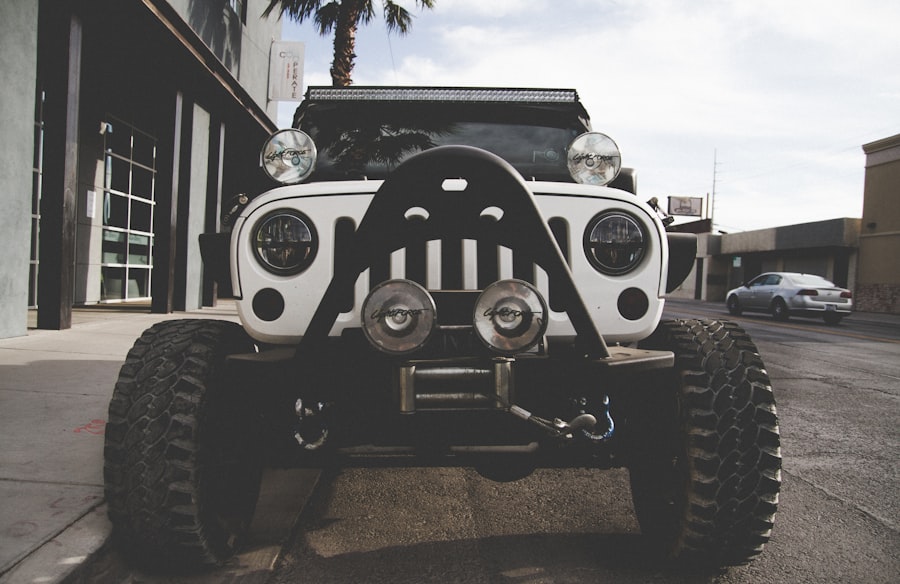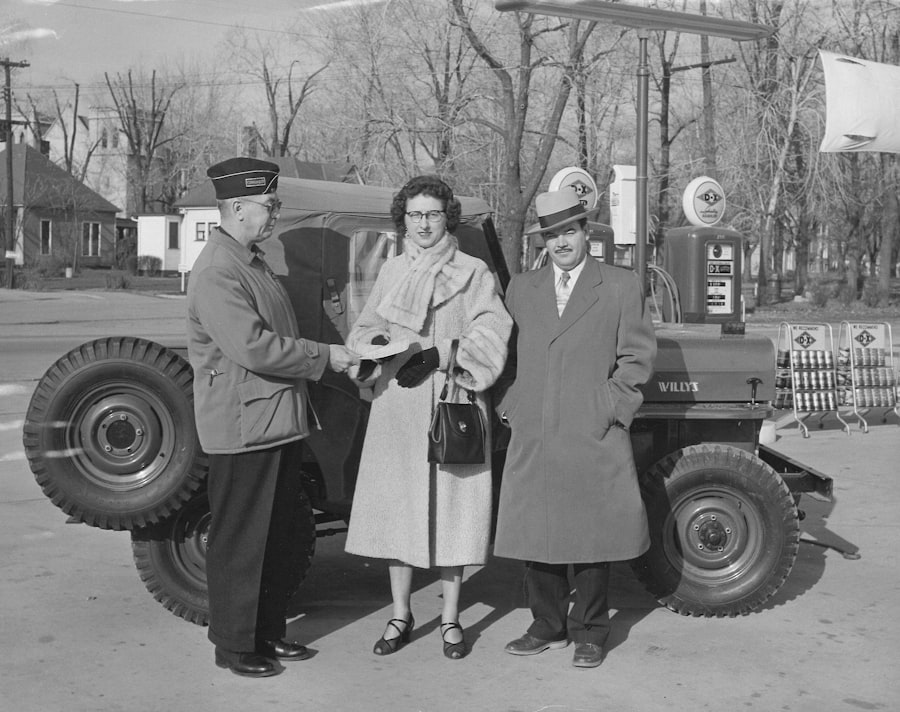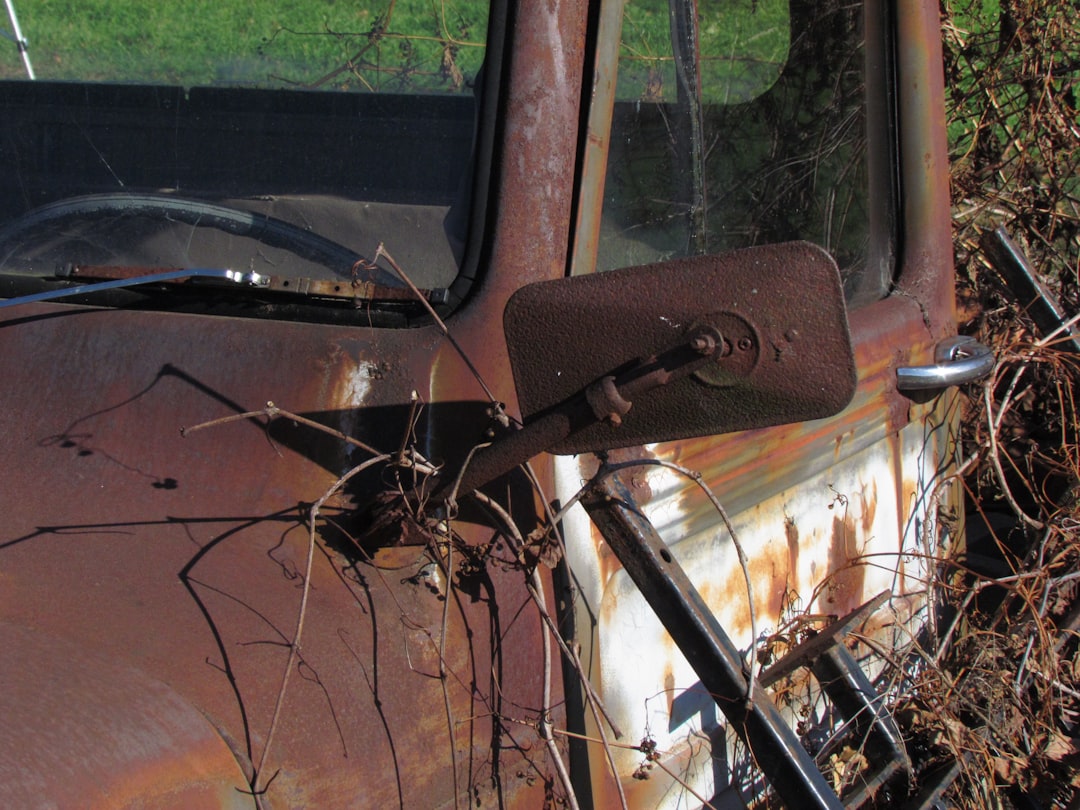The Willys Jeep stands as a testament to American ingenuity and resilience, evolving from a rugged military vehicle into a beloved symbol of adventure and freedom. When you think of off-roading, the image of the Willys Jeep likely comes to mind, with its distinctive shape and robust capabilities. This vehicle has transcended its original purpose, becoming a cultural icon that represents exploration and the spirit of the great outdoors.
Its journey from the battlefields of World War II to the trails of modern-day adventures is a fascinating story that highlights not only its engineering prowess but also its impact on society. As you delve into the history of the Willys Jeep, you will discover how it has captured the hearts of enthusiasts and casual drivers alike. Its versatility and durability have made it a favorite among those who seek both utility and adventure.
The Willys Jeep is not just a vehicle; it embodies a lifestyle that celebrates freedom, exploration, and the thrill of the open road. Understanding its origins and evolution will give you a deeper appreciation for this iconic machine and its place in automotive history.
Key Takeaways
- The Willys Jeep was originally designed as a military vehicle, but it has since become an iconic off-roader with a rich history and enduring legacy.
- Developed for military use during World War II, the Willys Jeep played a crucial role in various operations and left a lasting impact on military history.
- After the war, the Willys Jeep was adopted for civilian use, giving rise to the iconic off-roader that is beloved by enthusiasts around the world.
- The Willys Jeep has evolved over the years, from the CJ series to the modern-day Wrangler, while maintaining its rugged and adventurous spirit.
- With its prominent role in popular culture, the Willys Jeep has become a symbol of adventure, freedom, and the off-roading lifestyle.
The Origins of the Willys Jeep: Development and Early Military Use
The story of the Willys Jeep begins in the early 1940s, during a time when the United States was gearing up for World War
The military needed a lightweight, all-terrain vehicle that could transport troops and supplies across challenging landscapes. In response to this demand, several manufacturers were invited to submit prototypes for evaluation. Among them was Willys-Overland, which developed a design that would ultimately become the prototype for what we now know as the Jeep.

Willys-Overland’s design was innovative for its time, featuring a compact frame, four-wheel drive, and a powerful engine that could handle rough terrain. The vehicle’s versatility made it suitable for various military applications, from reconnaissance missions to transporting wounded soldiers. As you explore the early military use of the Willys Jeep, you’ll find that it quickly became an indispensable asset on the battlefield, earning a reputation for reliability and performance that would solidify its place in history.
The Willys Jeep in World War II: Its Impact and Legacy
| Aspect | Details |
|---|---|
| Manufacturer | Willys-Overland Motors |
| Production Years | 1941-1945 |
| Number Produced | Approximately 650,000 |
| Engine | Inline 4-cylinder |
| Top Speed | 65 mph (105 km/h) |
| Range | 300 miles (480 km) |
| Impact | Played a crucial role in World War II, used for various military purposes |
| Legacy | Considered an iconic vehicle and the precursor to modern SUVs |
During World War II, the Willys Jeep played a crucial role in numerous campaigns across Europe and the Pacific. Its ability to navigate difficult terrain allowed Allied forces to execute strategies that would have been impossible without such a vehicle. The Jeep became synonymous with mobility and adaptability, proving itself in various roles, including as an ambulance, command vehicle, and even as a platform for machine guns.
The legacy of the Willys Jeep extends far beyond its military service. It became a symbol of American strength and determination during a time of global conflict. Soldiers who drove the Jeep often formed strong bonds with their vehicles, which were seen as reliable companions in the face of adversity.
This connection contributed to the Jeep’s enduring popularity after the war, as returning veterans sought to bring home a piece of their experiences through civilian models.
Post-War Civilian Adoption: The Birth of the Iconic Off-Roader
After World War II ended, there was a significant shift in demand for the Willys Jeep. With soldiers returning home and looking for ways to reintegrate into civilian life, the Jeep transitioned from military use to civilian adoption. Willys-Overland recognized this opportunity and began producing civilian versions of the Jeep, known as the CJ (Civilian Jeep).
This marked the beginning of a new era for the vehicle, as it became popular among farmers, outdoor enthusiasts, and families alike. The CJ models were designed with versatility in mind, allowing owners to use them for various purposes—from farming to recreational off-roading. As you explore this period in history, you’ll see how the Willys Jeep captured the imagination of Americans seeking adventure and utility in one package.
The rugged charm of the CJ models helped solidify the Jeep’s status as an iconic off-roader, paving the way for future generations of vehicles that would carry on this legacy.
The Evolution of the Willys Jeep: From CJ to Wrangler

As time progressed, so did the design and functionality of the Willys Jeep. The CJ series laid the groundwork for what would eventually evolve into the modern-day Wrangler.
You can trace this evolution through various models that introduced features like more powerful engines, improved suspension systems, and enhanced safety measures. The transition from CJ to Wrangler marked a significant milestone in the Jeep’s history. The Wrangler retained the ruggedness that made its predecessors famous while incorporating modern amenities that appealed to a broader audience.
The Willys Jeep in Popular Culture: Its Role in Film and Television
The impact of the Willys Jeep extends beyond its practical applications; it has also made a significant mark on popular culture. You may recall seeing this iconic vehicle in countless films and television shows, often associated with adventure, heroism, and exploration. From classic war movies depicting World War II battles to modern action films featuring daring escapades in rugged landscapes, the Jeep has become an enduring symbol of bravery and resilience.
In addition to its appearances on screen, the Willys Jeep has inspired a sense of nostalgia among viewers who associate it with simpler times and outdoor adventures. Its presence in popular culture has helped solidify its status as an icon, making it instantly recognizable to audiences around the world. As you reflect on these portrayals, you’ll see how they have contributed to the Jeep’s allure and continued relevance in contemporary society.
The Willys Jeep as a Symbol of Adventure and Freedom
For many enthusiasts, the Willys Jeep represents more than just a vehicle; it embodies a spirit of adventure and freedom that resonates deeply with those who seek exploration beyond paved roads. When you think about off-roading or embarking on outdoor excursions, it’s hard not to envision yourself behind the wheel of a rugged Jeep, navigating through forests or climbing rocky hillsides. This sense of adventure is rooted in the very design of the Willys Jeep, which encourages exploration and discovery.
Whether you’re traversing remote trails or simply enjoying a weekend getaway with friends and family, driving a Jeep evokes feelings of liberation and excitement. As you embrace this adventurous spirit, you’ll find that owning a Willys Jeep is not just about transportation; it’s about embracing a lifestyle that celebrates nature and exploration.
The Influence of the Willys Jeep on Off-Roading Culture
The influence of the Willys Jeep on off-roading culture cannot be overstated. As one of the first vehicles designed specifically for rugged terrain, it set a standard for what an off-road vehicle should be. You may notice that many modern off-road vehicles draw inspiration from the original design principles established by the Willys Jeep—compact size, four-wheel drive capability, and durability.
As off-roading gained popularity as a recreational activity in the latter half of the 20th century, enthusiasts began to modify their Jeeps for enhanced performance on challenging trails. This culture of customization has become an integral part of off-roading communities worldwide. You might find yourself inspired by stories of fellow enthusiasts who have transformed their Jeeps into unique machines capable of tackling any obstacle they encounter.
The Willys Jeep in Modern Times: Its Continued Popularity and Relevance
In today’s automotive landscape, the Willys Jeep remains as popular as ever. With advancements in technology and design, modern iterations like the Wrangler continue to capture the hearts of both new drivers and long-time fans alike. You may find yourself drawn to its blend of classic styling and contemporary features that cater to today’s adventurous spirit.
The continued relevance of the Willys Jeep can be attributed to its ability to adapt while maintaining its core identity as an off-road vehicle. Whether you’re navigating city streets or exploring remote trails, driving a Jeep offers an experience that few other vehicles can match. As you consider your own adventures ahead, it’s clear that the Willys Jeep will remain a beloved choice for those seeking both utility and excitement.
The Collectible Value of Vintage Willys Jeeps
For collectors and enthusiasts alike, vintage Willys Jeeps hold significant value—not just monetarily but also sentimentally. As you explore this aspect of their legacy, you’ll discover that classic models from different eras are highly sought after by those who appreciate their historical significance and unique design features. Restoring or preserving these vehicles can be both a labor of love and an investment opportunity.
The market for vintage Jeeps has seen fluctuations over time, but certain models have consistently commanded high prices due to their rarity or unique characteristics. If you’re considering entering this world as a collector or simply want to appreciate these classic vehicles’ beauty and history, you’ll find that vintage Willys Jeeps offer an exciting journey into automotive heritage.
The Enduring Legacy of the Willys Jeep
As you reflect on the journey of the Willys Jeep—from its origins as a military workhorse to its status as an iconic off-roader—you’ll appreciate how this vehicle has left an indelible mark on automotive history and culture. Its ability to adapt over time while remaining true to its core values speaks volumes about its enduring appeal. The legacy of the Willys Jeep is not just about its engineering excellence; it’s also about what it represents—a spirit of adventure, freedom, and resilience that resonates with people across generations.
Whether you’re behind the wheel of a vintage model or enjoying a modern iteration like the Wrangler, driving a Willys Jeep is an experience that connects you to a rich history filled with stories of exploration and camaraderie. As you embark on your own adventures in this remarkable vehicle, you’ll become part of its ongoing legacy—one that celebrates both past achievements and future possibilities.
The history of the Willys Jeep is a fascinating journey that highlights its evolution from a military workhorse to a beloved civilian vehicle. During World War II, the Willys Jeep became an iconic symbol of American ingenuity and resilience, playing a crucial role in various military operations. Its robust design and versatility made it indispensable on the battlefield. After the war, the Jeep transitioned into civilian life, where it gained popularity for its ruggedness and off-road capabilities. For more insights into the history and impact of the Willys Jeep, you can explore a related article on the topic by visiting this page.
FAQs
What is the history of the Willys Jeep?
The Willys Jeep has a rich history that dates back to its development in the early 1940s. It was originally designed for military use during World War II and played a crucial role in various military operations.
Who developed the Willys Jeep?
The Willys Jeep was developed by the American car manufacturer Willys-Overland Motors, which was awarded the contract to produce the vehicle for the U.S. military.
What was the purpose of the Willys Jeep?
The primary purpose of the Willys Jeep was to serve as a versatile and reliable vehicle for military use. It was designed to be used for reconnaissance, transport, and other military operations.
How did the Willys Jeep contribute to World War II?
The Willys Jeep played a significant role in World War II by providing the military with a rugged and dependable vehicle that could navigate various terrains and carry out a wide range of tasks.
What was the impact of the Willys Jeep on civilian use?
After World War II, the Willys Jeep became popular among civilians for its off-road capabilities and practical design. It eventually paved the way for the development of modern-day SUVs and off-road vehicles.
What are some key features of the Willys Jeep?
The Willys Jeep was known for its compact size, four-wheel drive capability, and durable construction. It also featured a fold-down windshield and removable doors, making it adaptable for different purposes.
